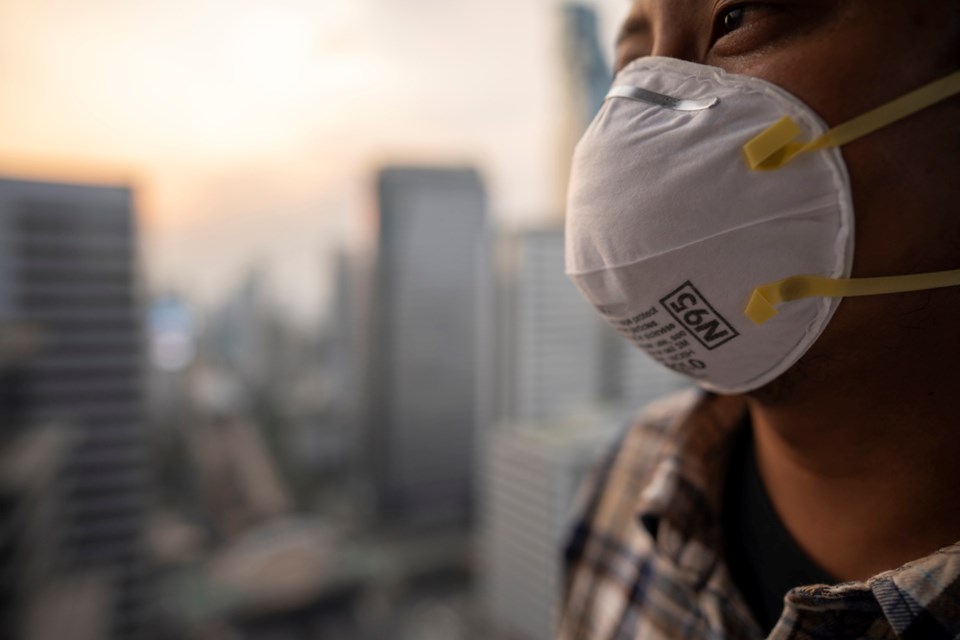If you've been breathing the smoky air in Metro Vancouver over the past few days, you could be at elevated risk of COVID-19.
The B.C. Centre for Disease Control warns of the harms to human health from wildfire smoke — and, in a region that's once again suffering poor air quality, the BCCDC's fact sheet on Wildfire Smoke and Your Health offers up some timely advice.
How does air pollution caused by wildfire smoke affect your health?
- Smoky air makes it harder for your lungs to get oxygen into your blood.
- Wildfire smoke can irritate your respiratory system and cause an immune response, which may lead to inflammation that affects other parts of your body.
- Common symptoms include eye irritation, runny nose, sore throat, mild cough, phlegm, wheezy breathing and headaches. Such symptoms can usually be managed without medical attention.
- Some people may have more severe symptoms, such as shortness of breath, severe cough, dizziness, chest pain or heart palpitations. Seek prompt medical attention if you have any of these symptoms.
- Smoky air may increase risk of some infections, such as pneumonia COVID-19, and ear infections in children.
Are there long-lasting health effects from wildfire smoke?
- Most health effects of wildfire smoke are transient and will disappear as the air quality improves.
- There is little research on whether there are longer-lasting health effects from seasonal wildfire smoke, and caution is recommended in the absence of scientific evidence.
- Remember that reducing exposure is the best way to protect against any health effects from wildfire smoke.
- Infants, unborn children and people with obstructive lung conditions (such as asthma and COPD) are most likely to experience longer-term health effects.
Who is most at risk from wildfire smoke?
- People whose health is compromised by an illness or chronic condition will find daily activities harder.
- People with respiratory problems such as asthma or COPD are at highest risk of experiencing health effects. Those with conditions such as heart disease, diabetes, cancer or mental illness are also at increased risk.
- Unborn children and infants may be vulnerable. Pregnant women and people caring for infants should consider using portable air cleaners.
- Young children have sensitive lungs and may need to decrease their activities during smoky periods, especially when outdoors.
How can you reduce your exposure to wildfire smoke?
- Portable air cleaners that use HEPA filtration can effectively remove smoke particles from the indoor air.
- Libraries, community centres and shopping malls often have cooler, filtered air that can provide a break from outdoor smoke.
- When driving, keep windows up, keep air conditioning on and use the "recirculate" setting to limit intake of outdoor air.
- The harder you breathe, the more smoke you inhale. Take it easy during smoky periods, consider exercising indoors, and drink lots of water.
Does a face mask protect me from wildfire smoke?
- Well-fitted respirators offer the most effective protection from fine particulate matter. Respirators are those marked with letter and number combinations, such as N95, KN95 and KF94.
- A good fit is the most important thing for filtration of particulate matter.
- A well-fitted respirator will reduce concentrations of fine particulate matter by more than 90 per cent.
- A three-layer cloth or disposable mask provides moderate protection compared with a respirator.
- Simple one-layer cloth masks, bandanas, gaiters, scarves, etc. offer no protection, whether wet or dry.
– source: B.C. Centre for Disease Control



